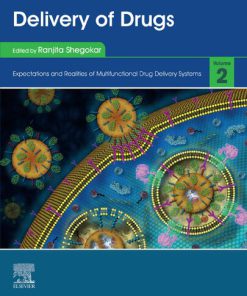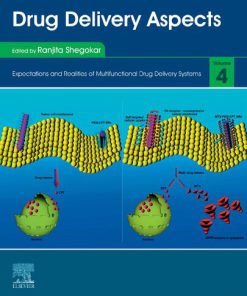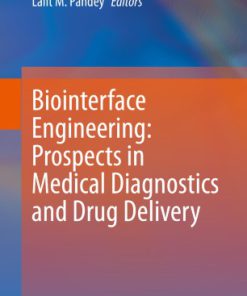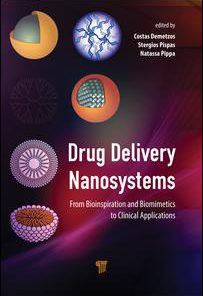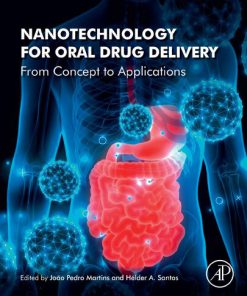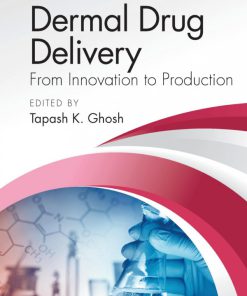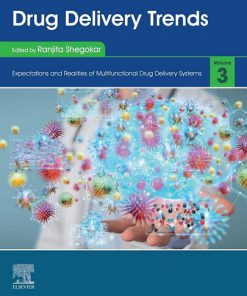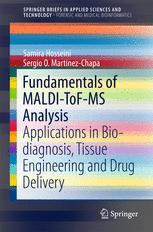Engineering Applications of Nanotechnology From Energy to Drug Delivery 1st Edition by Viswanatha Sharma Korada, Nor Hisham B Hamid 3319297613 9783319297613
$50.00 Original price was: $50.00.$25.00Current price is: $25.00.
Engineering Applications of Nanotechnology From Energy to Drug Delivery 1st Edition by Viswanatha Sharma Korada, Nor Hisham B Hamid – Ebook PDF Instant Download/DeliveryISBN: 3319297613, 9783319297613
Full download Engineering Applications of Nanotechnology From Energy to Drug Delivery 1st Edition after payment.
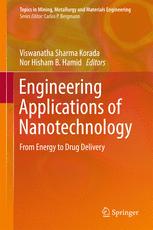
Product details:
ISBN-10 : 3319297613
ISBN-13 : 9783319297613
Author: Viswanatha Sharma Korada
This book focuses on the use of nanotechnology in several fields of engineering. Among others, the reader will find valuable information as to how nanotechnology can aid in extending the life of component materials exposed to corrosive atmospheres, in thermal fluid energy conversion processes, anti-reflection coatings on photovoltaic cells to yield enhanced output from solar cells, in connection with friction and wear reduction in automobiles, and buoyancy suppression in free convective heat transfer. Moreover, this unique resource presents the latest research on nanoscale transport phenomena and concludes with a look at likely future trends.
Engineering Applications of Nanotechnology From Energy to Drug Delivery 1st Table of contents:
1 Stability of Nanofluids
Abstract
1 Introduction
1.1 Industrial Applications
2 Agglomeration in Nanofluids
2.1 DLVO Theory
2.2 Non-DLVO Forces
2.3 Effect of Stability on Thermal Properties
3 Nanofluids Preparation Methods
3.1 Single Step
3.2 Two Step
4 Stability Evaluation Methods
4.1 Electron Microscopy
4.1.1 SEM
4.1.2 TEM
4.2 Sedimentation Techniques
4.3 Spectral Analysis
4.4 Zeta Potential
4.5 Dynamic Light Scattering
5 Ways to Improve Stability
5.1 Mechanical Mixing Techniques
5.1.1 Ultrasonication
5.1.2 High-Pressure Homogenizer
5.1.3 Wet Milling
5.2 Chemical Techniques
5.2.1 Surfactant Addition
5.2.2 Surface Modification
5.2.3 pH Adjustment
6 Conclusions
References
2 Considerations on the Thermophysical Properties of Nanofluids
Abstract
1 Introduction
2 Viscosity Models
2.1 Experimental Determination of Viscosity
3 Nanofluid Thermal Conductivity
3.1 Nanofluid Thermal Conductivity, k_{{rm nf}} Models
3.2 Experimental Thermal Conductivity, knf
3.3 k_{{rm nf}} in Base Liquid Ethylene Glycol
3.4 k_{{rm nf}} in Ethylene Glycol Water Mixtures
3.5 Effect of PH on Nanofluid Thermal Conductivity
3.6 Effect of Particle Size on k_{{rm nf}}
3.7 Effect of Size on Particle Specific Heat
4 Nanofluid Specific Heat
5 Density
6 Results and Discussion
7 Conclusions
Acknowledgments
References
3 Heat Transfer Enhancement with Nanofluids for Automotive Cooling
Abstract
1 Introduction
1.1 Automotive Cooling System
1.2 Nanofluid Synthesis Methods
1.3 Nanofluid Applications
1.3.1 The Big Impact of Nanoparticles
2 Forced Convection in a Car Radiator
2.1 Outlook
3 Experimental Work
3.1 Nanofluid Preparation
3.1.1 Experimental Test Rig Setup
3.1.2 Experimental Procedure
3.1.3 Experimental Data Analysis
3.1.4 Uncertainty Analysis
4 Result and Discussion
4.1 Outlet Temperature
4.2 Heat Transfer
4.3 Heat Rejected
4.4 Heat Transfer Enhancement
5 Conclusions and Recommendations
References
4 Transparent Carbon Nanotubes (CNTs) as Antireflection and Self-cleaning Solar Cell Coating
Abstract
1 Introduction
2 Photovoltaic Properties of Carbon Nanotubes
3 Antireflection and Self-cleaning Coatings
4 Modeling and Simulation Approach for Nanolayer
4.1 Finite-Difference Time-Domain (FDTD) Method
4.1.1 Theory of FDTD
4.2 Transfer-Matrix Method (TMM)
5 Conclusions
Acknowledgments
References
5 Nanofluids for Enhanced Solar Thermal Energy Conversion
Abstract
1 Introduction
1.1 Nanofluids
2 Solar Collector
2.1 Flat Plate Solar Collector
2.2 Direct Absorption Solar Collector
2.3 Evacuated Tube Solar Collector
2.4 Parabolic Trough Collector
2.5 Concentrated–Parabolic Solar Collector
2.6 PV/T Collectors
3 Challenges of Utilizing Nanofluids
4 Future Directions
5 Conclusions
References
6 Thin Film Hydrodynamic Bearing Analysis Using Nanoparticle Additive Lubricants
Abstract
1 Three-Layered Journal Bearing Analysis Using Nanoparticle Additive Lubricants
1.1 Thin Film Lubrication
1.2 Nanoparticle Additive Lubricants
1.3 Nondimensional Pressure in Three-Layered Journal Bearing
1.4 Three-Layered Journal Bearing Analysis
1.4.1 Load Capacity Parameter
1.4.2 Coefficient of Friction
2 Three-Layered Journal Bearing Analysis Using Nanoparticle Additive Couple Stress Fluids
2.1 Couple Stress Fluids
2.2 Nondimensional Pressure in Couple Stress Fluid Lubricated Nanoparticle Additive Three-Layered Jo
2.3 Couple Stress Fluid Lubricated Nanoparticle Additive Three-Layered Journal Bearing Analysis
2.3.1 Load Capacity
2.3.2 Coefficient of Friction
3 Partial Slip Thin Film Lubrication with Electric Double Layer
3.1 Electric Double Layer
3.2 Slip in Fluid Film Bearing
3.3 Nondimensional Pressure for Partial Slip Slider Bearing with Electric Double Layer
3.4 Partial Slip Slider Bearing Nondimensional Load Capacity with Electric Double Layer
4 Thin Film Lubrication with Porous and Electric Double Layer Using CNT Additives
4.1 Porous-Layered Thin Film Lubrication
4.2 CNT Additive Fluids
4.3 Nondimensional Pressure for Slider Bearing with Porous and Electric Double Layer
4.4 Nondimensional Load Capacity of Slider Bearing with Porous and Electric Double Layer
5 Conclusions
References
7 Mechanism of Heat Transfer with Nanofluids for the Application in Oil Wells
Abstract
1 Introduction
2 Nanofluid Preparation
2.1 Two-Step Method
2.2 One-Step Method
2.3 Other Novel Methods
3 Heat Transfer in Nanofluids
3.1 Thermal and Heat Transfer Characteristics
3.2 Convective Heat Transfer
3.3 Boiling Heat Transfer
4 Mechanism of Heat Transfer in Nanofluids
5 Prospective Performances
5.1 Wellbore Instability
5.2 Lost Circulation
5.3 Pipe Sticking
5.4 Reduction Torque and Drag
5.5 Toxic Gases
6 Nanomaterials as Drilling Fluid: Its Challenges
7 Conclusion
References
8 Novel Nano Copper-Tungsten-Based EDM Electrode
Abstract
1 Electrodischarge Machining
2 EDM Electrodes
2.1 Fabrication Techniques
2.1.1 Powder Metallurgy (P/M) Electrodes
2.1.2 Rapid Prototyping (R/P) Electrodes
2.1.3 Ball Milling of Electrodes
3 EDM Theory
3.1 Electrodes Wear
3.2 Material Removal Rates
3.3 Surface Roughness
4 Nanocomposite Cu–WC–Si Electrodes
4.1 Synthesizing the Nanocomposite
4.2 Consolidation Techniques
4.2.1 As-Received Powder Characterization
4.2.2 Selection of Milling Variables
4.3 Experimental Designs
4.3.1 Taguchi Method
4.3.2 Milling Experiment
4.3.3 As-Milled Powder Characterization
4.3.4 Densities and Volume Measurement
4.3.5 Heat Conduction Measurement
4.3.6 Settings for Performance Measurement
5 Results of Testing and Analysis
5.1 Machining with Conventional Electrodes (Hardened Die Steel Using Cu–W Electrode)
5.1.1 Machining Set-up
5.1.2 Material Removal Rate (mg/min)
5.1.3 Electrode Wear (EW)
5.1.4 Tool Wear Ratio TWR (%)
5.1.5 Surface Roughness Ra (µm)
5.1.6 Estimated Result at Optimum Condition and Confirmation Test
5.2 Machining with Nanocomposite Electrode on Machining of Hardened Die Steel
5.2.1 Performance of Cu–WC–Si Electrode on Machining of Die Steel (Cu–WC–Si)
5.2.2 MRR (mg/min) Achieved by Using Cu–WC–Si Electrode at Optimal Setting
5.2.3 EW (mg/min) Achieved by Using Cu–WC–Si Electrode at Optimal Setting
5.2.4 TWR (%) of Cu–WC–Si Electrode at Optimal Setting
6 Conclusion
References
9 Nitriding of Duplex Stainless Steel for Reduction Corrosion and Wear
Abstract
1 Introduction
2 Corrosion Problems in Oil and Gas Environment
3 Effect of Treating Temperature on Microstructure of Steel
4 Possible Corrosion Type on Duplex Stainless Steel in H2S and CO2 Environment
5 Effect of H2S and CO2 Partial Pressure Ratio on Corrosion of DSS
6 Effect of Gas Composition on Surface Morphology
7 Possible of Increase of Surface Roughness After Nitriding
8 Carbide Precipitation and Its Effect
9 Conclusion
References
10 Thermal Spray Coatings for Hot Corrosion Resistance
Abstract
1 Introduction
2 Hot Corrosion
2.1 Physical Characteristics of Hot Corrosion
2.1.1 High-Temperature Hot Corrosion (HTHC) Type I
2.1.2 Low-Temperature Hot Corrosion (LTHC) Type II
2.2 Degradation of the Superalloys
2.2.1 The Initiation Stage
2.2.2 The Propagation Stage
3 Mechanisms of Hot Corrosion
3.1 Chemistry of Salts
3.1.1 Sulphate Chemistry
3.1.2 Vanadate Chemistry
3.2 Hot Corrosion in Liquefied Salt Atmospheres
3.2.1 Liquefied Salt (Na2SO4–60 %V2O5) Atmosphere-I
3.2.2 Liquefied Salt (Na2SO4–25 %K2SO4) Atmosphere-II
3.2.3 Hot Corrosion of the Nickel-Based Alloys
3.2.4 Hot Corrosion of Iron-Based Mixtures
4 Some Studies on Power Plant Environments
5 Preventive Measures Against Hot Corrosion
6 Role of Thermal Spray Coatings
6.1 Advantages of Thermal Spray Coatings
6.2 Requirement of High-Temperature Coatings
6.3 Coating Deposition Techniques
6.3.1 Thermal Spray Techniques
6.4 Nanostructured Coatings
7 Conclusions
References
11 Application of Nanotechnology in Cancer Treatment
Abstract
1 Introduction
1.1 Diagnosis in Cancer
1.2 Drawback in Current Tumour Imaging
2 Nanotechnology
2.1 Nanomaterials for Cancer
2.1.1 Passive Tumour Targeting
2.1.2 Active Tumour Targeting
2.2 Quantum Dots
2.3 Spherical Gold Nanoparticles
2.4 Single-Walled Carbon Nanotube (SWCNT)
2.5 Superparamagnetic Iron Oxide Nanoparticles (SPIONs)
2.6 Dendrimers
2.7 Liposome Nanoparticles
2.8 Polymer Nanoparticles
2.9 Micelles
2.10 Nanocantilevers
3 Application of Nanotechnology in Cancer Surgery
3.1 Control of Operative Blood Loss
3.2 Nanotechnology in Bone and Joint Surgery
3.3 Activated Probe and Tumour Painting
3.4 Nanocoated Surgical Blades
3.5 Nanoneedles
3.6 Nanotechnology in Sentinel Node Biopsy
4 Nanotechnology in Radiotherapy
4.1 Nanotechnology in Tumour Imaging for Tumour Localization
4.2 Use of Carbon Nanotubes for X-ray Generation
4.3 Nanotechnology in Radiosensitization
4.4 Nanomedicine for Concurrent Chemoradiotherapy
4.5 Nanobrachytherapy
4.6 Radiation Protection
4.7 Radiation-Induced Drug Delivery
4.8 NanoXray in Radiotherapy
5 Nanotechnology in Medical Oncology
5.1 Nanoparticle Albumin-Bound Paclitaxel
5.2 Liposomal Doxorubicin (Caelyx)
5.3 Pagylated Filgrastim (Neulasta)
5.4 Application in Gynaecological Cancers
5.5 Nanotechnology in Cancer of the Genital Tract
5.6 Non-chemotherapy Applications
6 Nanotechnology in Palliative Care
7 Nanotoxicity and Safety of Nanoparticles
8 Conclusions
References
12 Current Trends in the Preparation of Nanoparticles for Drug Delivery
Abstract
1 Introduction
2 Silica Nanoparticles and Their Role in Drug Delivery
3 Gold Nanoparticles and Their Role in Drug Delivery
4 Future Prospects of Engineered Nanoparticles in Drug Discovery
5 Conclusions
People also search for Engineering Applications of Nanotechnology From Energy to Drug Delivery 1st:
rebel heroes in history
rebel rockers everyday fun
everyday heroes rpg kickstarter
everyday heroes ttrpg
everyday heroes roblox
Tags: Engineering Applications, Nanotechnology, Drug Delivery, Viswanatha Sharma Korada, Nor Hisham B Hamid
You may also like…
Business & Economics
Engineering
Biointerface Engineering: Prospects in Medical Diagnostics and Drug Delivery Pranjal Chandra
Relationships & Lifestyle - Health - Diseases & Disorders
Business & Economics




